Need help choosing the perfect yarn for your next project?? With the huge selection of yarns available, it’s hard to know which will work best for a crochet garment. There’s tons of different brands of yarn and fiber types. You can get a very different look and feel depending on whether you work with acrylic, cotton, linen, bamboo, or superwash vs. non-superwash wool yarn.
This post will give you some general information about many of the different types of yarns, and help steer you towards the right yarn for your project. I’ve tried to make this a comprehensive list that includes as many different fibers as I can. That said, this list does not include every single type of yarn out there. Over time, I plan to add to this list as I experiment with and learn about new yarns.
TYPES OF YARN
Choosing the best yarn for your crochet garment ultimately comes down to your own preferences, accessibility, and budget. Use what works best for you. Below, I’ll break down some of the different fiber types that I’ve had experience with, the pros and cons for each, and sprinkle in a few examples of my favorite brands.
Disclosure: some of the links in this post are affiliate links and if you go through them to make a purchase I will earn a small commission at no additional cost to you.
ACRYLIC
Pros:
- Machine washable (great for kids)
- Durable
- Doesn’t usually grow (or change gauge) with wearing, blocking, or washing
- Great for beginners
- Inexpensive
- Easy to find at big box stores (JOANN Fabrics, Michaels)
Cons:
- Not breathable—not a good choice if you tend to get warm easily
- Can be stiff— doesn’t have good drape
- Hard to block and shape the way you want it… unable to completely block out ripples from increase rounds in circular yoke sweaters
- Not environmentally friendly- not biodegradable, releases microplastics into the water when washed
- Melts with heat (acrylic yarn is manufactured plastic)
- Flammable
*All that to say, many people choose acrylic because of its accessibility and ease of use.
My Favorite Acrylic Yarns
Red Heart Super Saver- perfect for amigurumi, not bad for garments…I made my first ever crochet sweater in this yarn, and it’s held up to lots of wear and machine washing. It’s gotten so much softer after washing too)
Caron Simply Soft- great color selection, beautiful sheen, decent drape for acrylic
COTTON/ACRYLIC BLENDS
Pros:
- Fantastic stitch definition
- Lightweight
- More drape than acrylic-only yarn- has some elasticity
- Perfect for year-round makes, use higher cotton content blends for warm weather projects
- Beginner-friendly
- Machine washable & durable
- Inexpensive
- Can be found at big box stores
Cons:
- less breathable than 100% cotton yarn
- the acrylic is not environmentally friendly
- can shrink if exposed to high heat with washing and drying
My Favorite Cotton/Acrylic Blend Yarns
WeCrochet Comfy Fingering, Comfy Worsted, Comfy Sport– fantastic for warm-weather garments with a high ratio of cotton to acrylic: 75% pima cotton/ 25% acrylic. A total dream to work with! Lightweight, great structure and stitch definition.
Premier Cotton Fair- 52% Cotton/ 48% Acrylic. This yarn has the loveliest sheen and drape. Very cozy and wearable for year round garments.
Lion Brand Shawl in a Ball (sadly discontinued)- very lightweight and has excellent drape. So cozy. 58% Cotton/ 39% Acrylic/ 3% Other)
COTTON
Pros:
- Light and cool to wear—perfect if you live in a hot climate or tend to get too hot
- Much better drape than acrylic (especially pima cotton after blocking)
- Inexpensive
- Available at big box stores
- Great structure and stitch definition—good for texture, cables, and lace.
- Brands like Lily Sugar and Cream are great for washcloths, potholders, and home decor
- 100% cotton holds shape and structure when wet
- Machine washable (though I prefer to block for best shape and longevity of my makes)
- Organic Cotton is eco-friendly
Cons:
- Variation in tension/gauge tends to show more with cotton yarn. (sometimes our tension/gauge can vary from day to day if we aren’t paying attention to it)
- Can be stiff for a garment if not using Pima Cotton
- Heavy when wet and can stretch out considerably if your not careful
Favorite Cotton Yarns
Lion Brand 24/7 Cotton Worsted, 24/7 Cotton DK– amazing stitch definition and structure, very comfortable to wear, durable, can be used for a variety of projects: wearables and home decor
Lily Sugar and Cream- great for potholders, dishcloths, home decor. durable.
Paintbox Yarns, Cotton DK- sooo comfortable and lightweight. beautiful stitch definition.
LINEN/ LINEN BLENDS
Pros:
- Perfect if you live in a hot climate/tend to get too hot—light and cool to wear
- Great drape, lovely for sleek garments
- Gets much softer after washing/blocking
- Eco-friendly
Cons:
- Can lose structure with blocking (in my experience it doesn’t hold up well for textured garments)
- Can stretch out quite a bit from wearing
- Stiff and slightly tricky to work with…uneven tension can really show
- Can be expensive and hard to find—usually you need to order online
My Favorite Linen Yarns
WeCrochet Lindy Chain– linen and pima cotton blend, lightweight, great for warm weather makes.
Shibui Knits Reed- very silky and soft, though pricey. perfect for summer garments.
BAMBOO/ BAMBOO BLENDS
Pros:
- Great for warm weather—great breathability, sweat resistant
- Also good for cool weather—keeps you warm
- Incredible drape
- Hypoallergenic
- UV resistant
- Eco-friendly
- Incredibly soft
Cons:
- Looses strength when wet, take care when blocking
- Hand-wash only
- Tends to split when your working with it
- May not hold shape well for textured garments
- May pill
My Favorite Bamboo Yarns
Lion Brand Truboo– 100% bamboo, such beautiful sheen and drape! Just keep an eye on that tension/gauge as you work!
Lion Brand Coboo– a bamboo blend: 50% Rayon from Bamboo/ 50% cotton giving it better shape and structure, good stitch definition.
SUPERWASH MERINO WOOL
Pros:
- Blocks out to the shape you’d like beautifully
- Excellent drape—best for sleek, lightweight garments
- Very soft and smooth
- Beautiful color selections
- Not too warm… wears well in warm or cool weather
- Technically machine-washable (though I recommend wet blocking)
Cons:
- Can grow significantly with washing/blocking, can change your gauge significantly (this is why I always recommend to block your swatch!!)
- Expensive
- Harder to find in big box stores (but tons of availability online)
- Not as good for structured or textured garments (the process of making wool superwash takes a way the texture in the fiber so the shape doesn’t hold well)
- Non-biodegradable, not great for the environment
My Favorite SW Wool Yarns
Cascade 220 Superwash (100% SW Merino)
WeCrochet Swish DK– (100% SW Merino)
WeCrochet Stroll Tonal– (75% SW Merino, 25% nylon)
WeCrochet Gloss DK– (70% SW Merino, 30% silk)
NON SUPERWASH WOOL
Pros:
- Perfect for colorwork- stitches become nice and plump with blocking, and they hold together well.
- Great structure, good for texture, maintains the shape of your piece
- Blocks out beautifully without growing excessively
- Warm and cozy
- Resilient Fiber—dirt and static proof, fire retardent
Cons:
- Can be expensive (although some great budget wools do exist… see my list of favorites)
- Has an “animal smell” which can bother some people (others like it)
- Some wools can be scratchy and uncomfortable next to skin
- Some people have a wool allergy
- Not machine washable
- Pills (little balls of fuzz)
- Wool felts easily with agitation when moist or wet. It can be effected by extreme changes in temperature. Special care must be taken when washing/blocking to always use cool water and never wring or twist.
- Can shrink if washed in warm or hot water
- Attracts moths
My Favorite Non SW Wool Yarns
WeCrochet Capra (85% wool, 15% cashmere)
WeCrochet Wool of the Andes (100% Peruvian Highland Wool)
Note: I recommend to block all natural fibers because it helps preserve them and maintain their shape. (blocking is how I wash all my handmades.) Here’s a link to an article all about how to block.
ACRYLIC/WOOL BLENDS
(the best of both worlds)
Pros:
- washable
- better drape than acrylic-only
- can be gently shaped with blocking
- more breathable than acrylic-only
- warm
Cons:
- not eco-friendly
- not as soft as 100% natural fibers
- can be too warm to wear
- somewhat stiff
My Favorite Acrylic/Wool Blends
Lion Brand Scarfie– 78% Acrylic/22% Wool, lightweight with some warmth.
Lion Brand Wool Ease – better drape than just acrylic alone, warm & cozy.

Choosing The Best Yarn- Wrap Up
I hope that this post will help you choose yarn for your next crochet garment. There’s so many considerations as you make your decision. Really there’s no right or wrong… just what works best for you considering your preferences, budget, and accessibility.
This list is far from all-inclusive to all the different types of fiber on the market. I plan to add to this list over time. Let me know about your experience with fiber types in the comments. And please don’t be shy if there’s anything I’ve missed that you’d like me to add in here!
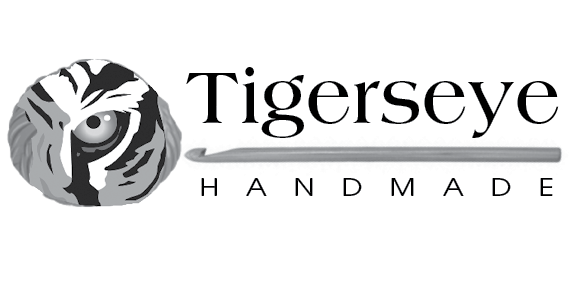
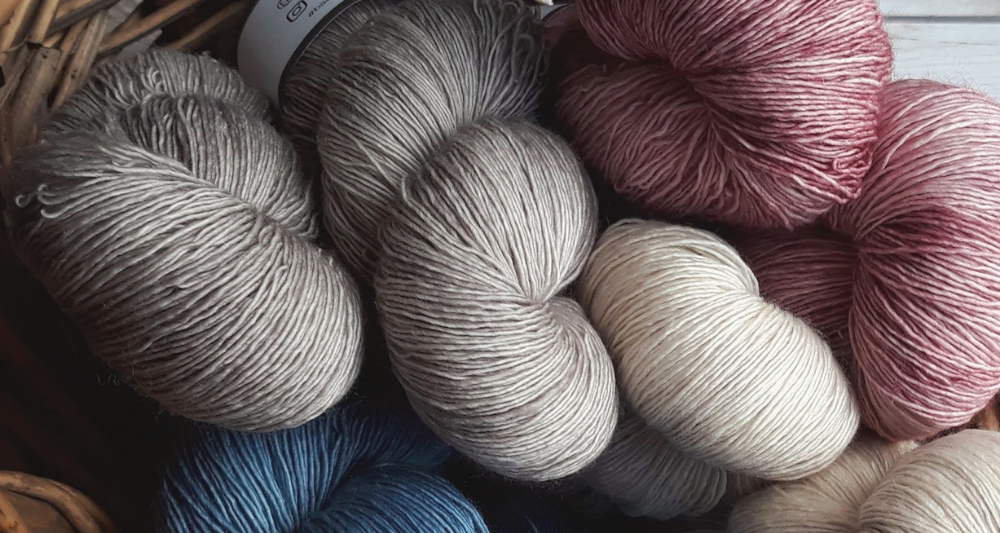
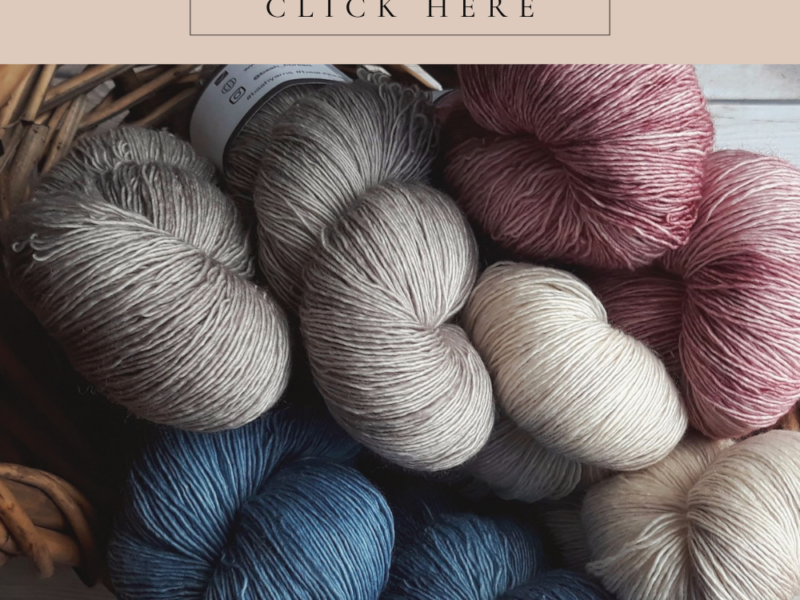


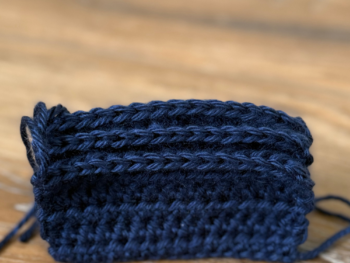
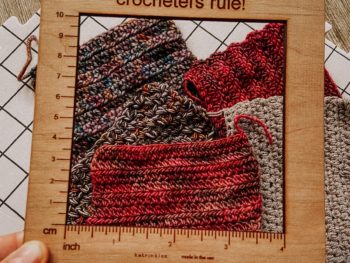
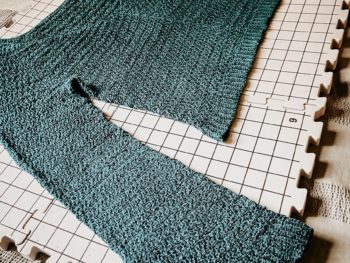
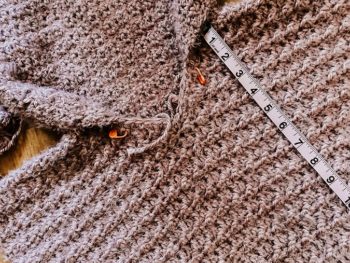
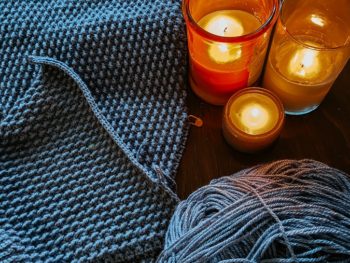
 How To Block Crochet Garments & Why It’s Important
How To Block Crochet Garments & Why It’s Important
[…] Click here for more information about the different fiber types, and how to choose for your next cro… […]